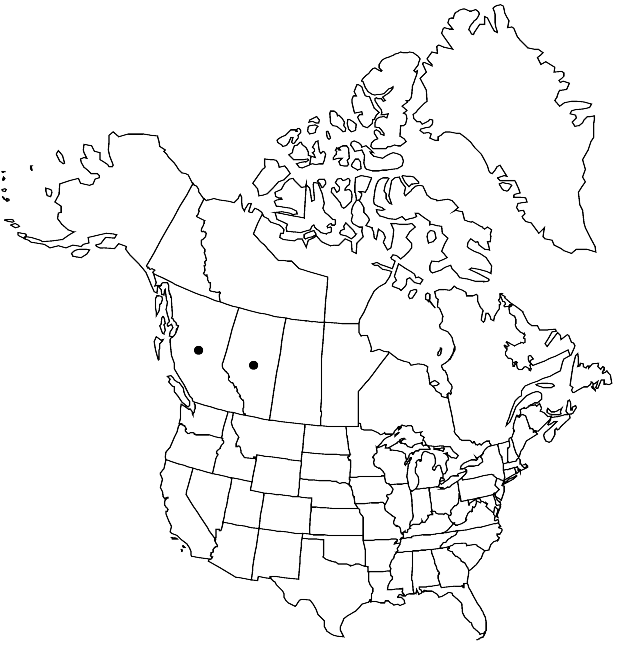Braya humilis subsp. maccallae
Novon 16: 346. 2006.
Stems ascending to erect, often unbranched, 0.4–2.3 dm, moderately pubescent. Leaves: blade margins entire or, sometimes, sinuate-dentate, surfaces glabrescent to moderately pubescent. Flowers: petals white, (4.4–) 4.9–6.7 (–7.2) × (2.1–) 2.3–4 (–4.2) mm. Fruits often abortive, somewhat torulose, 0.7–1.2 mm wide when fully developed; septum not fenestrate or split longitudinally. 2n = 28.
Phenology: Flowering May–Jul.
Habitat: Sandy gravelly riverbanks and floodplains, sometimes on slopes and glacial moraines
Elevation: 1500-3000 m
Discussion
Subspecies maccallae differs from subspp. elesmerensis and humilis in having leaf margins mostly entire, flowers exceptionally large, and a high percentage of abortive fruit. Cauline leaves are much reduced and arise from the base of the stem, giving an almost acaulescent appearance to the plant. Breeding studies (J. G. Harris 1985) indicate that subspp. maccallae and porsildii are self-incompatible, while most subspecies of Braya humilis are strongly autogamous.
Selected References
None.
Lower Taxa
"not" is not a number. "elongated" is not a number."thick" is not a number."dm" is not declared as a valid unit of measurement for this property."dm" is not declared as a valid unit of measurement for this property.
